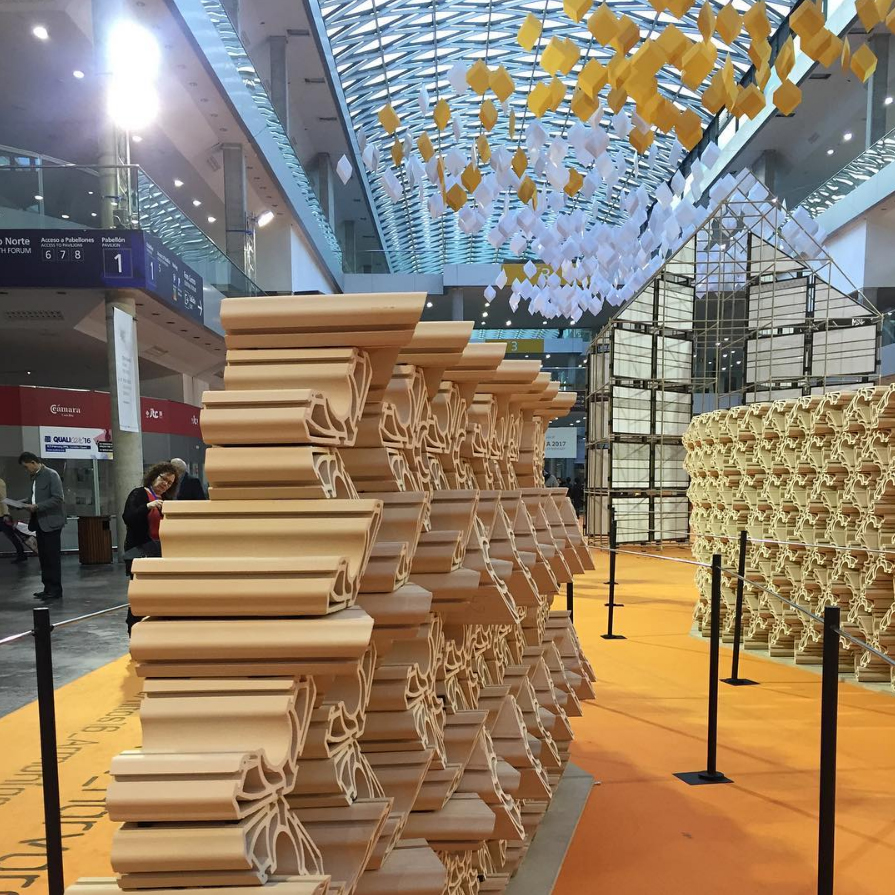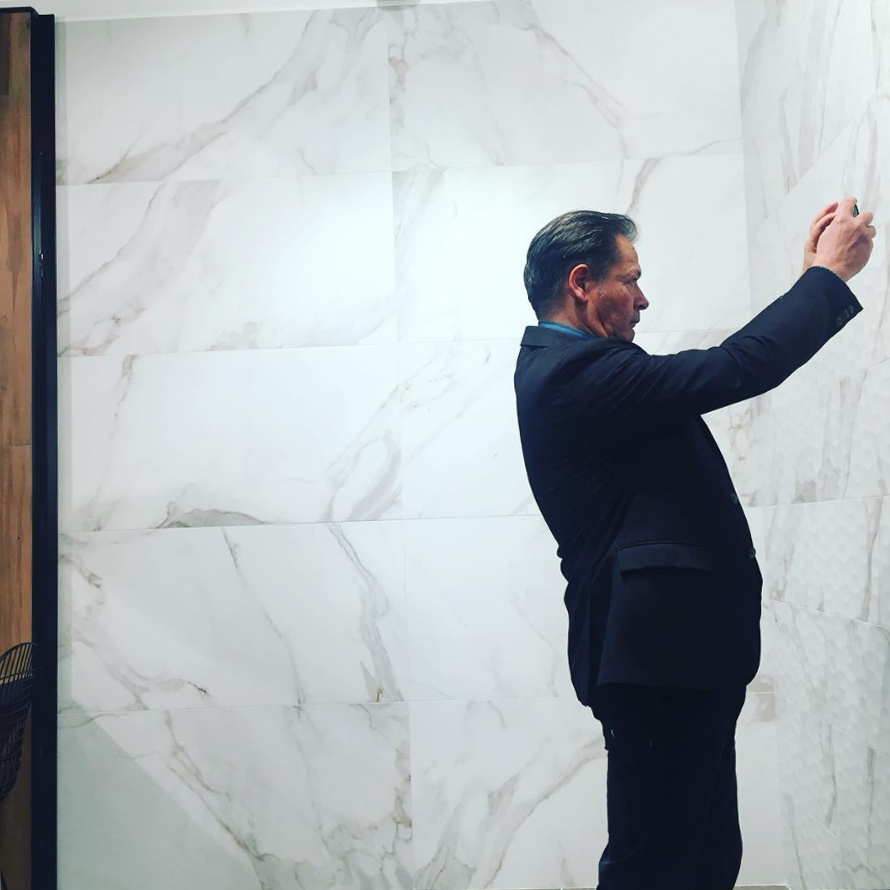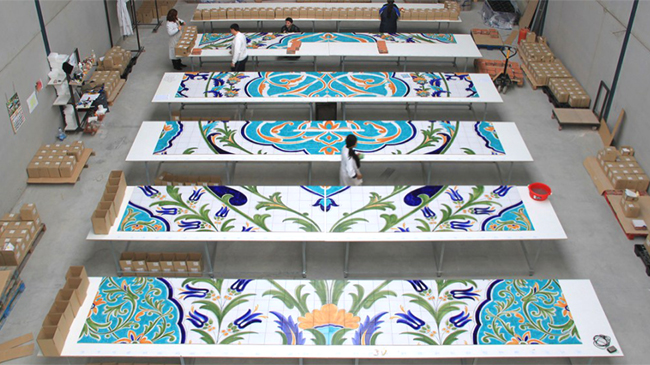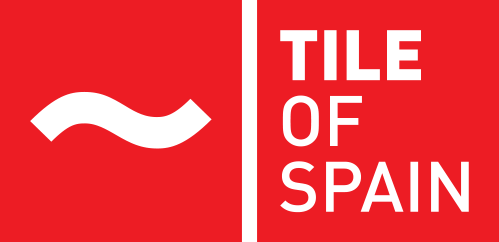This post originally appeared on Metropolis.
It is not often that a building material also becomes an indelible marker of place. While Spanish tile has long held this distinction, awareness among designers and architects, especially in the U.S., is still spreading. It is perhaps for this reason that Tile of Spain—an organization representing 125 Spanish tile manufacturers—is hosting a contest called “Passport to Creativity.” The prize is a free trip to Spain, to take place February 19-24, 2017, with stops at major tile manufacturing facilities and a visit to Cevisama, the International Ceramic Tile and Bath Furnishing Show in Valencia.
To enter the contest is straight forward: contestants must submit a photo of themselves somehow interacting with Spanish tile, perhaps next to a section of installed material, handling a sample, or even considering a catalog. But of course, to earn the trip and win the contest, the entries will require exemplary style and flare with an eye for unique and innovative design.
This tessellated tile pattern was inspired by Kristyna Borden’s trip to Spain. The tile, part of Lea Ceramiche’s Pixel + Nest line was designed by HOK’s Product Design Team. Photo courtesy HOK Product Design.
Metropolis got in touch with three past winners for a brief Q&A about their time on the Passport to Creativity trip, to learn how they have since incorporated Spain’s rich tradition of tile design and production into their practices.
How have you used tile in specific projects since you returned from the trip?
Elaine Santos; ASID, BarlisWedlick Architects (ES): One of our clients asked us to incorporate terracotta tile into the garden level of a townhouse renovation in the West Village (New York City). The tile needed to be thinset, but without sacrificing the character and variation that the reclaimed had. Since I was equipped with production information and terminology I learned during the trip, I was able to work with various tile representatives to efficiently find the perfect fit for our client.

As part of the trip, contest winners get to visit Cevisama, the International Ceramic Tile and Bath Furnishing Show in Valencia. Photo courtesy Elaine Santos.
Francine Rozental; Senior Designer, Antrobus + Ramirez Interior Design (FR): I work in high-end interior architectural projects, both commercial and residential. Therefore, most of our clients lean more towards marble. I was able to broaden my knowledge of ceramic tile and realized there are tiles that mimic marble beautifully. I’m more aware of the innovations in the industry now.
Right after the trip, I was selecting finishes for a hotel spa in Mexico’s Riviera Maya. I was ecstatic to specify and use a ceramic tile pattern with inspiration from the local area. It definitely makes a statement in the design of the spa and tells the guests a story of the place with a modern, clean look.

A visitor to the Cevisama show is enthralled by the striking tile works. “You [saw] a lot of this happening during the show,” says past contest winner Elaine Santos.
Photo courtesy Elaine Santos.
Where do you look for inspiration in tiling?
ES: I love to look up Victorian tile patterns and Art Deco motifs. It never ceases to surprise me how they still feel so fresh and relevant today.
FR: I can say I heard more about tile than I thought I ever would, which I’m not complaining about! It was eye-opening to see the range of this industry—from handmade tile studios to large-scale factories—and to observe these producers in their local, historical context.
KB: As a designer who loves to travel, I find inspiration from various sources. It’s fascinating to see different ways tile is incorporated based on the geographical location, the fabrication methods available and the era of the design. Pulling from these layers ultimately plays a role in selecting tile for projects.

Cerámica Artística San Ginés, in Talavera de la Reina, Toledo, Spain is one of the many manufacturers that winners have visited as part of the “Passport to Creativity” contest. Above, tile artists lay out a section for the world’s largest hand-painted tile mural, since installed at the Oran Convention Center, in Oran, Algeria. Photo courtesy Ceramica San Ginés
What moments stand out from “Passport to Creativity?”
ES: One highlight was the studio visit to Ceramica San Gines in Talavera de la Reina, Toledo. This small studio let us observe artists hand-painting and firing ceramic tile. I also enjoyed meeting designers, bloggers, and ceramic tile specialists on this trip. Whether learning about the history, a new tile style, or the interesting places we visited, I relished hearing everyone’s point of view.
FR: I kept being inspired by every corner! It seemed there was a piece of history everywhere: tile on the street, a brick wall, a ceiling, a bench, interior and outdoor places. That, to me, was rich and astonishing. Seeing the process step by step in the San Gines Talavera workshop was just breathtaking. Everything was done by hand, taking inspiration from architects, nature, and tattoo artists. I got to paint a few brush strokes using classic techniques, applying paint directly on the ceramic tile.
KB: The entire trip was well-organized and geared toward designers and architects. A few highlights include the architectural tour of Madrid and the Cevisama Tile Fair in Valencia.
For those interested in seeing the evolution of Spanish tile first hand, Tile of Spain runs its annual Passport to Creativity contest. Winners receive a CEU trip to Spain. More information at tileofspainusa.com/contest.
Special thanks to participants Kristyna Borden, Francine Rozentaly Elaine Santos.

